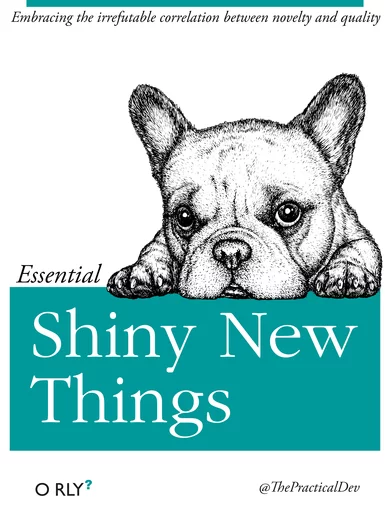我又迷信了呀....

看了DataCamp的Winning a Kaggle Competition in Python , 觉得有点用的就是介绍Target encoding的那部分. 丫的压根就没教我怎么Winning. 我肯定也是被收智商税的一类人, 幸好课程是白嫖的. Visual Studio Dev Essentials 送了俩月的DataCamp订阅.
唯一让我觉得新鲜的, 就是target encoding, 因为之前没看过. 其他的都是泛泛而谈.
都没有银弹的么🐱🐉
Target encoding
Mean target encoding
-
smoothing
-
在训练集上计算均值, 应用到测试集上
- oof, 在某个kfold上计算, 应用到(k-1)fold上
# 在训练集上计算均值, 在测试集上应用mean target encoding
def test_mean_target_encoding(train, test, target, categorical, alpha=5):
# Calculate global mean on the train data
global_mean = train[target].mean()
# Group by the categorical feature and calculate its properties
train_groups = train.groupby(categorical)
category_sum = train_groups[target].sum()
category_size = train_groups.size()
# Calculate smoothed mean target statistics
train_statistics = (category_sum + global_mean * alpha) / (category_size + alpha)
# Apply statistics to the test data and fill new categories
test_feature = test[categorical].map(train_statistics).fillna(global_mean)
return test_feature.values
# 在训练集上oof, 应用mean target encoding
def train_mean_target_encoding(train, target, categorical, alpha=5):
# Create 5-fold cross-validation
kf = KFold(n_splits=5, random_state=123, shuffle=True)
train_feature = pd.Series(index=train.index)
# For each folds split
for train_index, test_index in kf.split(train):
cv_train, cv_test = train.iloc[train_index], train.iloc[test_index]
# Calculate out-of-fold statistics and apply to cv_test
cv_test_feature = test_mean_target_encoding(cv_train, cv_test, target, categorical, alpha)
# Save new feature for this particular fold
train_feature.iloc[test_index] = cv_test_feature
return train_feature.values
#调用上述两个函数, 分别对训练集和测试集做target encoding
def mean_target_encoding(train, test, target, categorical, alpha=5):
# Get test feature
test_feature = test_mean_target_encoding(train, test, target, categorical, alpha)
# Get train feature
train_feature = train_mean_target_encoding(train, target, categorical, alpha)
# Return new features to add to the model
return train_feature, test_feature
在K-fold CV中使用 target encoding
# Create 5-fold cross-validation
kf = KFold(n_splits=5, random_state=123, shuffle=True)
# For each folds split
for train_index, test_index in kf.split(bryant_shots):
cv_train, cv_test = bryant_shots.iloc[train_index], bryant_shots.iloc[test_index]
# Create mean target encoded feature
cv_train['game_id_enc'], cv_test['game_id_enc'] = mean_target_encoding(train=cv_train,
test=cv_test,
target='shot_made_flag',
categorical='game_id',
alpha=5)
# Look at the encoding
print(cv_train[['game_id', 'shot_made_flag', 'game_id_enc']].sample(n=1))
Missing Data
Numerical data
- Mean/Median imputation
- Constant value imputation (-999)
Categorical data
- 高频项
- 新值 (MISS)
sklearn.impute SimpleImputer
# Import SimpleImputer
from sklearn.impute import SimpleImputer
# Create mean imputer
mean_imputer = SimpleImputer(strategy='mean')
# Price imputation
rental_listings[['price']] = mean_imputer.fit_transform(rental_listings[['price']])
# Import SimpleImputer
from sklearn.impute import SimpleImputer
# Create constant imputer
constant_imputer = SimpleImputer(strategy='constant', fill_value='MISSING')
# building_id imputation
rental_listings[['building_id']] = constant_imputer.fit_transform(rental_listings[['building_id']])
Baseline Model
Hyperparameter tuning
| Competition type | Feature engineering | Hyperparameter optimization |
|---|---|---|
| Classic Machine Learning | +++ | + |
| Deep Learning | - | +++ |
- Grid search
- Random search
- Bayesian optimization
Model ensemble
- blending
- 多个模型, 取平均
- stacking
- 多层预测
- 第一层模型的预测结果, 作为第二层模型的输入特征
简单的blending
from sklearn.ensemble import GradientBoostingRegressor, RandomForestRegressor
# Train a Gradient Boosting model
gb = GradientBoostingRegressor().fit(train[features], train['fare_amount'])
# Train a Random Forest model
rf = RandomForestRegressor().fit(train[features], train['fare_amount'])
# Make predictions on the test data
test['gb_pred'] = gb.predict(test[features])
test['rf_pred'] = rf.predict(test[features])
# Find mean of model predictions
test['blend'] = (test['gb_pred'] + test['rf_pred']) / 2
print(test[['gb_pred', 'rf_pred', 'blend']].head(3))
简单的stacking
from sklearn.model_selection import train_test_split
from sklearn.ensemble import GradientBoostingRegressor, RandomForestRegressor
# Split train data into two parts
part_1, part_2 = train_test_split(train, test_size=0.5, random_state=123)
# Train a Gradient Boosting model on Part 1
gb = GradientBoostingRegressor().fit(part_1[features], part_1.fare_amount)
# Train a Random Forest model on Part 1
rf = RandomForestRegressor().fit(part_1[features], part_1.fare_amount)
# Make predictions on the Part 2 data
part_2['gb_pred'] = gb.predict(part_2[features])
part_2['rf_pred'] = rf.predict(part_2[features])
# Make predictions on the test data
test['gb_pred'] = gb.predict(test[features])
test['rf_pred'] = rf.predict(test[features])
from sklearn.linear_model import LinearRegression
# Create linear regression model without the intercept
lr = LinearRegression(fit_intercept=False)
# Train 2nd level model in the part_2 data
lr.fit(part_2[['gb_pred', 'rf_pred']], part_2.fare_amount)
# Make stacking predictions on the test data
test['stacking'] = lr.predict(test[['gb_pred', 'rf_pred']])
# Look at the model coefficients
print(lr.coef_)
Tips
- Save folds
- Save model runs
- Save model predictions
- Save performance results
Comments !